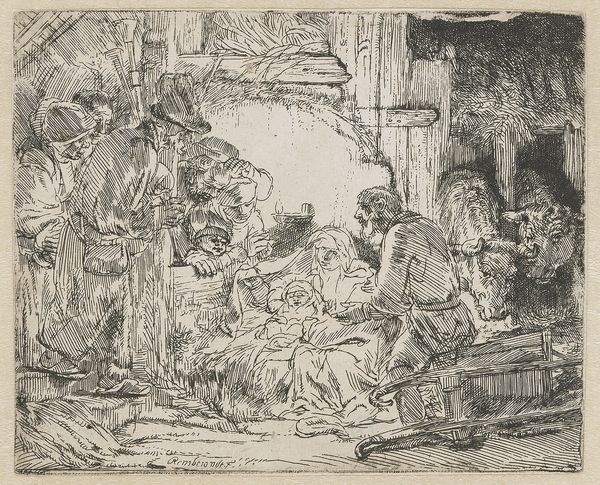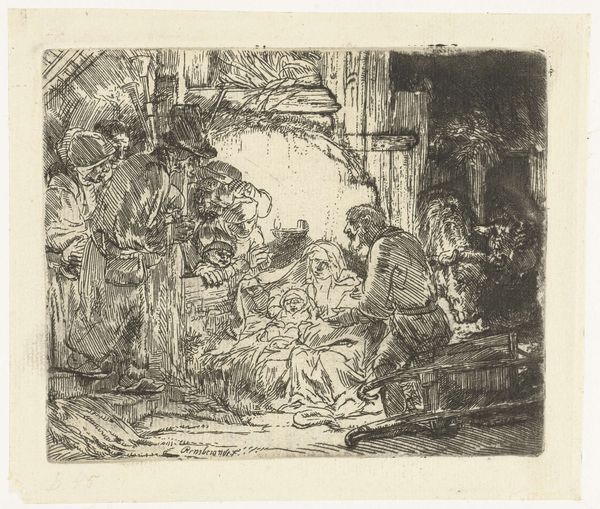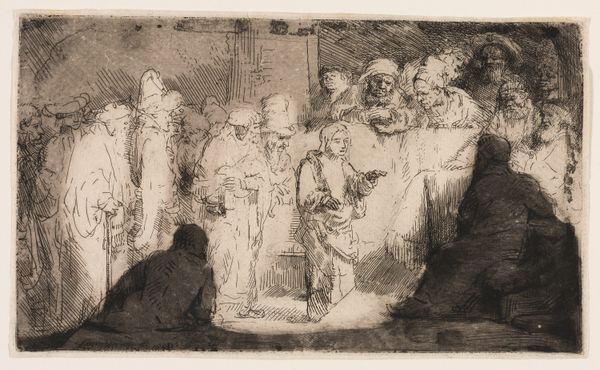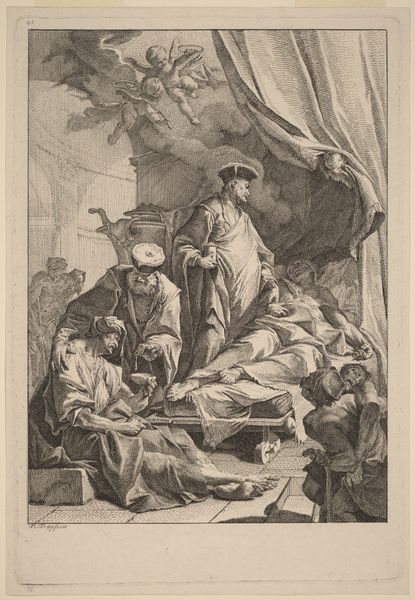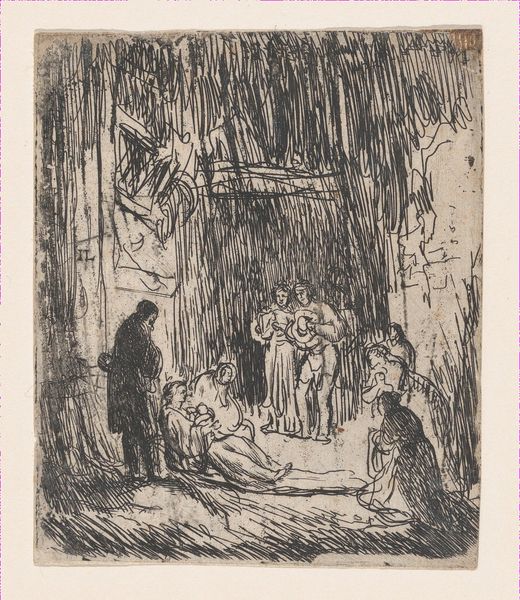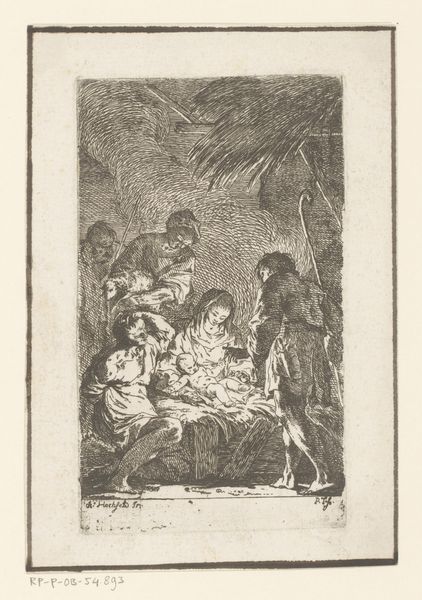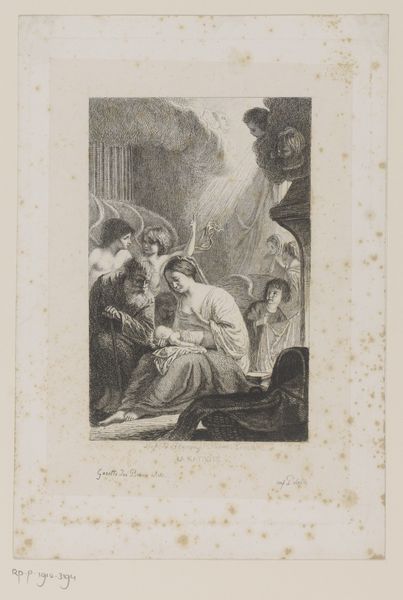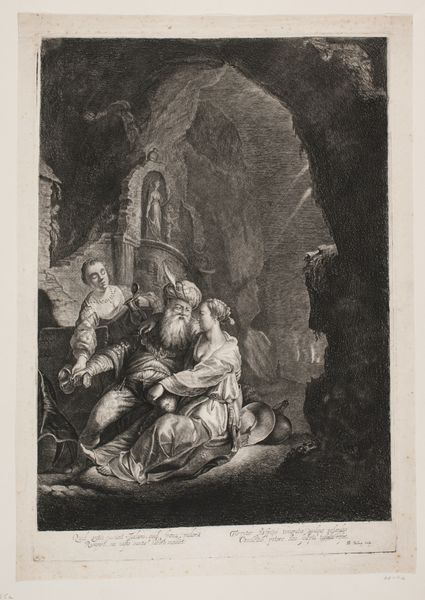
drawing, pencil, pen
#
drawing
#
narrative-art
#
pen sketch
#
figuration
#
personal sketchbook
#
pencil
#
pen
#
genre-painting
Dimensions: sheet: 12.3 x 8.4 cm (4 13/16 x 3 5/16 in.)
Copyright: National Gallery of Art: CC0 1.0
Editor: This sketch is titled "A Dramatic Scene with a Fainting Woman" by Gustave Dore. It looks to be made with pen and pencil. The scene feels so chaotic and…violent. What do you see in this piece? Curator: The energy of this drawing definitely draws the eye. Look at the urgency of the lines, the hasty strokes. This wasn't about careful representation; it was about capturing a specific moment, an impression of heightened emotion. Consider the sheer quantity of marks Dore applied to paper; that's material evidence of intense artistic labour, a physical investment in conveying narrative. The 'fainting woman' trope here is, from a materialist perspective, less about idealizing feminine vulnerability and more about how it was manufactured and consumed within the 19th century art market. What social narratives was Dore, perhaps unconsciously, perpetuating through this frantic execution? Editor: So, you're less interested in the story and more in how Dore created it and what that creation tells us? Curator: Exactly. The subject is less about high art and more about the cultural circumstances of art-making. Dore's materials, readily available, were cheap to aquire in comparison to canvases and oils. This reality opened creative avenues, or restricted the creation and distribution depending on who you were. How did that affect who got to make what? How might we compare it to similar limitations, or freedom, in contemporary art creation? Editor: I never really thought about it that way – about the materials being part of the message and its consumption. I'll definitely look at sketches differently now! Curator: Seeing the materiality – that’s where the real stories often reside. It prompts important questions.
Comments
No comments
Be the first to comment and join the conversation on the ultimate creative platform.
